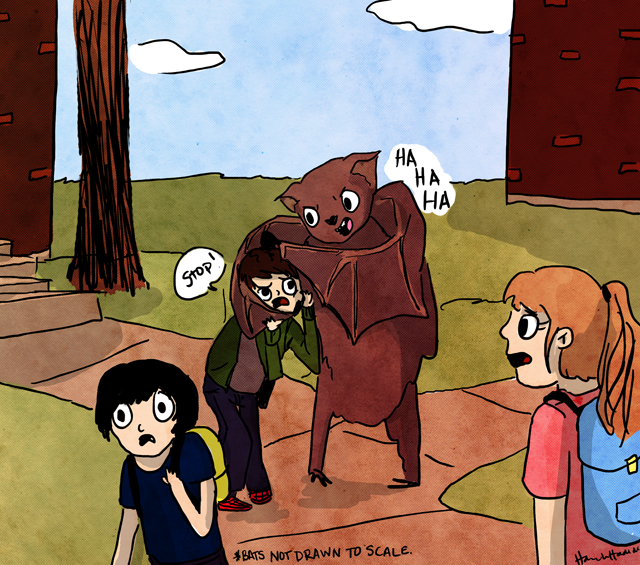What’s the problem with bats on campus? Is there a problem?
There’s not one (exactly), but that wasn’t the impression given by an informational e-mail sent out to students last Thursday by the Environmental Health and Safety Office at UT with the subject line “Bats on Campus.”
“There are bats on campus?” thought 60,000 students previously unaware of the leathery-winged habitants of their dorm hall.
Yes there are, said the email, which went on to remind students that “Austin has a significant bat population.”
Bats, according to the email, “are considered a high-rabies risk species and like all wildlife, should never be touched.”
Most students are probably familiar with Austin’s large bat population from the Congress Avenue Bridge, where tourists flock to watch the 1.5 million bats that roost underneath swirl out at dusk for their evening hunt. And that part about never touching a bat? Even Ozzy Osbourne, the rockstar who famously bit the head off a bat in the middle of a concert, claims he only touched the bat because he believed it was made of rubber. If the Prince of Darkness himself doesn’t want to touch a live bat, why are administrators suddenly concerned that students may be getting too handsy with them?
Here’s why: Because spring is a prime migration season for the Mexican free-tailed bats that populate Austin, more of them show up in unexpected spots on campus.
“Bats are returning from winter roosts to Austin and they’ll be here through the fall. When they migrate back to Austin, there’s a big influx of bats and a lot of times bats start showing up where you wouldn’t expect to see them, looking for their roosting locations,” Carin Peterson, the Training and Outreach Coordinator for the Campus Animal Makesafe program, said.
Unfortunately, their old roosting locations may have been destroyed by human development or claimed by bats who were more proactive about their housing situation and claiming their spot earlier in the spring semester — I mean, migration season. Consequently, bats displaced from their roosting location make temporary homes in less-ideal locations, like underneath shingles or in attics. Sometimes, they get trapped under your dorm room bed.
But don’t chide them for it. Bats, said Dianne Odegard, a local bat rehabilitator, are just looking for “what all creatures, including humans,” need in a shelter: a place to live where they’re safe from predators, weather and where they can safely raise their pups. The female bats have their pups in June, so many have traveled here while pregnant. Have you ever migrated from the Americas to Austin with bat pups in your stomach? I hope not. But the point is, please be sympathetic.
If you encounter a bat inside a building, lure it outside by closing the doors to other rooms and opening more windows. Only the most insane bats, which Odegard insisted there were very few of, will approach a human.
“They’re shy creatures,” Odegard said.
If the bat won’t move, you can cover it with a cardboard box, which you can keep it in until Animal Control claims them (or the novelty of having a pet bat wears off).
Above all, as the informational e-mail warned us, don’t touch the bat. If a bat has any contact with humans, it must be euthanized and tested for rabies instead of being rehabilitated. Any other tips for nursing a wounded bat?
“Don’t hit it with a tennis racket. That would be the completely wrong thing to do,” Odegard said. “You can’t thwat them out of the room with a broom. They’re very small animals and their bones are very fragile.”
Noted. If only the subject line had read, “Bats on Campus: Do not hit with tennis rackets.”





















